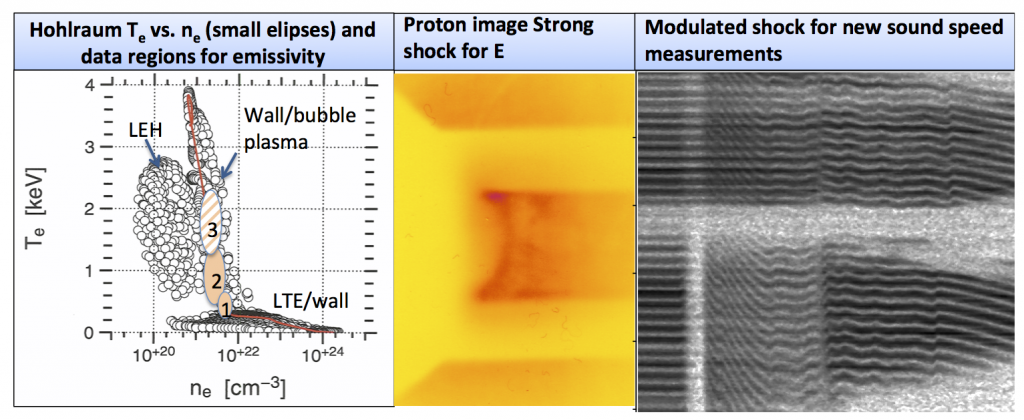Gilbert Collins (14-SI-003)
Abstract
A burning plasma provides a unique environment in terms of extreme temperature and density conditions, as well as in terms of the flux of energy and particles. Currently, the modeling of burning plasma behavior relies on a fluid description. However, these models have known limitations, and a fuller kinetic description may allow a better understanding of current models as well as the opportunity to consider other burning scenarios. The demand for benchmarking data and increasingly sophisticated microphysics models for high-energy-density matter is increasing as advanced laser systems approach hot-spot ignition. These laser systems manipulate high-energy-density matter to such extremes that state-of-the-art simulations are not predictive, and in many cases, experimental outcomes are difficult to predict. Predictive implosions at Livermore's National Ignition Facility, for example, require a new generation of microphysics models. The goal of this project is to collect benchmark data, modernize high-energy-density microphysics models, and engage a broad science community to enable predictive control of burning plasma on advanced laser systems. We intend to use ignition experiments at the National Ignition Facility to prioritize microphysics research. This effort will extend current data analysis techniques to include statistical and topological multivariable methods to test for self-consistency between microphysics models and Inertial Confinement Fusion data. This work will lead a worldwide effort to establish a predictive control of burning plasma for fundamental science and potential future applications such as energy production.
We expect that this effort will lead to a new generation of benchmarked microphysics models, resulting in new insights for optimizing and using the burning plasma state. We are developing new high-energy-density platforms and engaging a broad scientific constituency. Specifically, this effort will benchmark equation-of-state models for target capsule ablators (used to compress the laser ignition target) and for fuel, and test fundamental assumptions such as the Thomas–Fermi limit relevant to quantum mechanics, which are implicit in these models. We will determine seeds for instability generated by chemistry or rapid compression rates. Key transport and kinetic quantities will be measured to benchmark simulations for optimizing burning plasma. Our results will enable more predictive simulations of inertial-confinement hohlraum target capsule performance, fuel assembly, stagnation pressure, and yield. In addition, this work will engage a new generation of scientists focused on high-energy-density research at LLNL and other national laboratories.
Mission Relevance
Developing an enhanced predictive capability for initiating and optimizing fusion burn is important for science-based stockpile stewardship as well as for inertial fusion science and technology, both of which are Laboratory strategic focus areas. Our research will provide the benchmarking data and computational tools to enable more predictive manipulation of high-energy-density matter for NNSA, with a specific focus of optimizing a burning plasma state at the National Ignition Facility and other high-energy lasers, applicable to high-energy-density science.FY15 Accomplishments and Results
In FY15 we (1) measured the hydrogen equation of state at tenfold compression and determined the first sound-speed data for hydrogen at pressures to 3 Mbar, as well as the first hydrogen Gruneissen data (a key temperature-dependent physical characteristic responsible for thermoelastic efficiency of materials) to 3 Mbar; (2) conducted equation-of-state measurements of fusion ignition ablators into the many-terapascal regime, and discovered most measurements in equation-of-state models for hydrogen at 2 to 3 Mbar are significantly different than current data; (3) performed the first conductivity measurement on hydrogen at tenfold compression, and collected thermal conductivity for materials relevant to Inertial Confinement Fusion into the multiple-electronvolt regime; (4) analyzed high-temperature, low-density nonlocal thermodynamic equilibrium data for gold and uranium, and fielded simultaneous Thomson scattering and K and L electron-shell diagnostics to determine equivalent (or excess) noise temperature; (5) developed and tested the first nonlocal thermodynamic equilibrium tabular modeling capability; and (6) fielded gold emissivity experiments for the high-density nonlocal thermodynamic equilibrium regime and determined that M-band emission spectra versus equivalent noise temperature and spectra are different than models.Publications and Presentations
- Ping, Y., et al., "Differential heating: A versatile method for thermal conductivity measurements in high-energy-density matter." Phys. Plasma. 22, 092701 (2015). LLNL-JRNL-670180.






